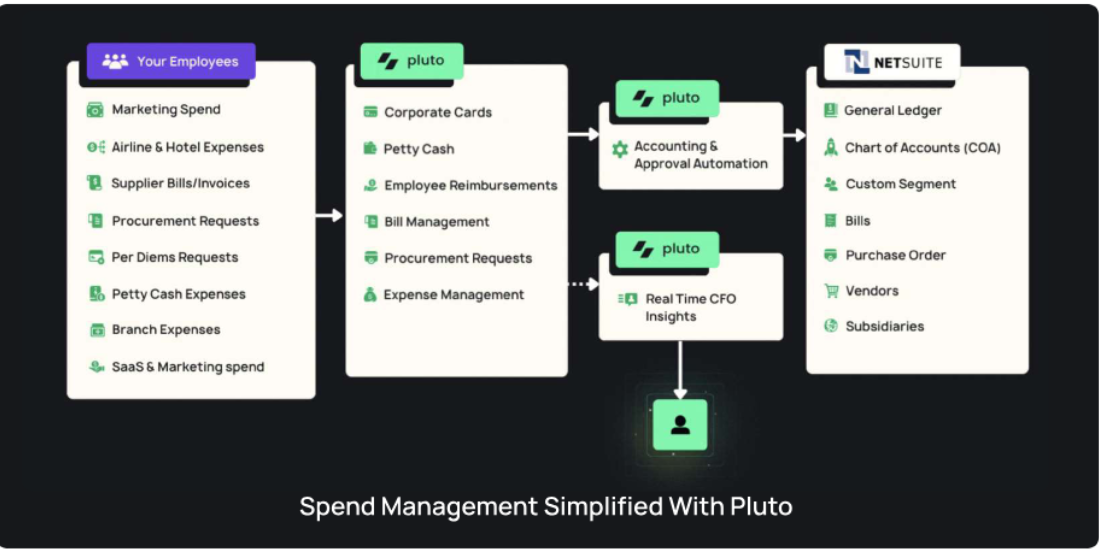AI has become the go-to solution for every problem—at least, that’s what it feels like. Scroll through LinkedIn, attend a webinar, or read any tech blog, and you’ll hear the same message: AI will transform finance.
But for most CFOs and finance teams, the reality is far less clear.
What does “AI in finance” even mean?
Is it automation? Forecasting? Fraud detection? All of the above?
While the hype builds, the actual application gets lost in translation. Finance leaders aren’t just navigating new tools; they’re also facing pressure from leadership to “bring in AI” without always knowing what success looks like.
Worse, they’re drowning in information. Every vendor promises smarter, faster, better outcomes. But few explain what really changes when AI enters your financial stack—and what it takes to make it work.
In this blog post, we’ll break down what AI in financial planning actually looks like in practice, what it promises to solve, and how your team can adopt it with confidence, without risking chaos, confusion, or costly mistakes.
What AI in Financial Planning Actually Means
When people discuss AI in finance, they envision hyper-intelligent tools replacing entire departments.
However, the reality is simpler—and more practical.
At its core, AI in financial planning is about machines handling repetitive, logic-driven, and error-prone tasks, allowing teams to focus on decisions that move the business forward.
Here’s what that looks like in real workflows:
Used well, AI doesn’t replace finance professionals; it removes their most frustrating, mundane tasks. It adds speed, consistency, and a layer of insight that would take hours (or days) to replicate manually.
Why the AI Promise Falls Apart
AI tools promise a shiny dashboard.
Everything is auto-processed. Everything is reconciled. Everything ready to drive smarter decisions.
And on paper, it all checks out. These tools draw from ERPs, card feeds, invoicing systems—even custom data sources—to create a complete, real-time view of your finances.
But this only works when everything is already structured and flowing through the right systems. In most teams, that’s not the case, with the data being:
- Outdated — last month’s spends show up this month
- Incomplete — missing vendors, unclear categories
- Inconsistent — “software” in one team, “SaaS” in another
So, instead of getting insights from AI, teams spend hours just preparing the inputs.
And when they don’t? The AI operates on fragmented data, resulting in unreliable output.

It’s no surprise that 48% of companies cite “difficulty gathering consistent data” as one of the biggest barriers to AI adoption, higher than concerns around cost, compliance, or even ROI.
So, finance teams do what they’ve always done when systems fail—go back to Excel. Where they know what’s happening, how it works, and where every formula lives.
Why the Smartest Teams Start Earlier in the Stack
Financial planning isn’t just about faster reports or prettier dashboards. It’s about deciding where the money goes — what to invest in, what to cut, and how to prepare for what’s ahead.
Making these decisions based on half-truths or partial data is a risk that most teams can’t afford. That’s why the most forward-thinking finance teams don’t start with AI. They start with the data.
Before layering on smart tools, they fix the foundation: how spend gets captured, coded, approved, and synced. They reduce noise, close loopholes, and clean up their processes, so when AI steps in, it actually works.
Laying the Groundwork for Real Results
AI fails when your data is a mess.
But once the right processes are in place, finance teams can finally trust the data flowing through their systems.
Pluto helps teams build that solid input layer—the part that usually gets ignored until it's too late.

Pluto brings all spend—from cards, reimbursements, petty cash, and accounts payable—into one clean, connected system.
- Receipts captured instantly, straight from WhatsApp or email
- Every transaction auto coded with the right general ledgers (GLs) and tax rules
- Approvals handled upfront, not chased after
- Seamless sync to your ERP, so nothing falls through
When spend is complete, categorized, and controlled at the source, you close books faster and more confidently.
Forecasts are grounded in reality. Variance alerts mean something. And insights from AI are finally worth listening to. Because now, the inputs are right, and the tools actually deliver.
Centralizing All Spend Data for Reliable Financial Planning
Pluto consolidates every company expense into a single platform, creating a true source of truth for finance teams.
Whether it’s petty cash, corporate cards, reimbursements, invoices, or accounts payable, all spend data flows seamlessly into your financial systems, eliminating manual entry, reducing errors, and ensuring that your forecasts and AI insights are based on the most accurate, up-to-date information.
Here’s a closer look at how Pluto simplifies spend management and keeps your data clean:
1. Petty Cash Management

Traditional petty cash systems rely on paper registers or scattered spreadsheets, making reconciliation difficult.
Pluto replaces this with a digital petty cash register, allowing the finance team to:
- Track every disbursement in real time so there’s no missing cash
- Hold employees accountable for their expenses. They log their cash usage directly in the system.
- Avoid manual reconciliation. Finance teams no longer need to chase employees for receipts.
Instead of relying on the finance team to manually update records, Pluto ensures all petty cash transactions are logged instantly.
2. Budget-Controlled Corporate Cards

With Pluto, finance teams can issue unlimited smart corporate cards to employees, each with built-in budget controls and automated approval workflows.
- Set predefined spending limits and rules, ensuring compliance with company policies
- Automate receipt collection by notifying employees via WhatsApp for every transaction to upload a receipt.
- Pluto’s optical character recognition (OCR) technology then extracts and assigns tax codes, GL codes, and other required data, eliminating the need for manual entry.
By linking each card transaction to the correct budget category, finance teams always have an up-to-date view of spending, removing the need for manual reconciliation and improving forecasting accuracy.
3. Reimbursements

Managing out-of-pocket expenses is a slow, frustrating process for both employees and finance teams. With Pluto:
- Employees submit receipts directly on the platform, eliminating paper trails.
- The automated approval workflow ensures expenses are reviewed and approved promptly.
- Once approved, reimbursements are processed instantly, with all data recorded and synced with ERPs.
Instead of spending hours collecting receipts and processing payments, finance teams get fully categorized, real-time reimbursement data.
4. Invoices and Accounts Payable

Invoices get buried in inboxes, purchase requests are scattered across different systems, and approvals take forever. Vendors chase payments, and finance teams scramble to match invoices with purchase orders and budgets.
Pluto solves this by:
- Automating invoice capture: invoices can be forwarded via email, bulk uploaded, or sent through WhatsApp
- Syncing purchase requests, purchase orders, and invoices, enabling seamless three-way matching for compliance and tracking
- Customizing approval workflows, ensuring invoices are reviewed and approved efficiently
- Enabling bulk payments or ERP syncing—either pay vendors directly within Pluto or push approved invoices to ERPs for centralized tracking
With Pluto, vendor transactions are logged and tracked in real time, providing finance teams with complete visibility into outstanding payables.
The Foundation for Effective AI in Financial Planning
AI in financial planning can deliver powerful insights, but only if it has reliable data to work with.
When finance teams spend more time fixing data issues than analyzing results, the problem isn’t the AI itself. It’s the quality of everything feeding into it.
Without clean, accurate, and up-to-date data, AI tools struggle to provide meaningful forecasts, flag anomalies, or generate actionable reports.
Pluto solves this by centralizing and structuring all your spend data in real time.
Whether it’s petty cash, corporate cards, reimbursements, or invoices, every transaction is captured accurately and approved through automated workflows. This ensures that the data your AI tools rely on is complete, consistent, and ready for analysis.
With Pluto as the foundation, your AI becomes a true asset, freeing your finance team from manual grunt work and enabling smarter decision-making.
Clean data means faster insights, better forecasts, and more confident financial planning.
Sign up for free and see how Pluto can bring clarity and control to your spend data.
.png)

.webp)
.png)


%20(1).webp)











